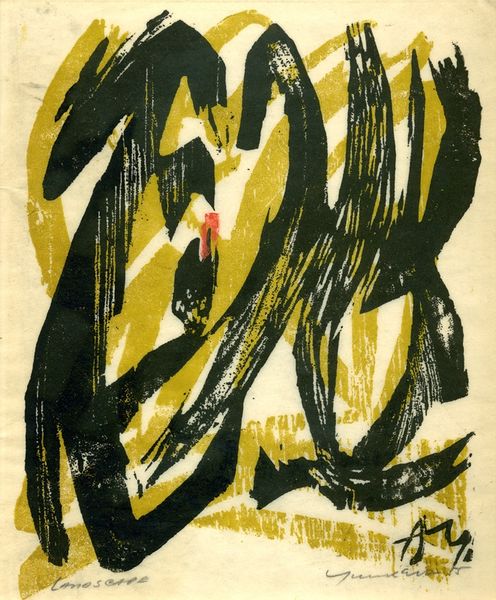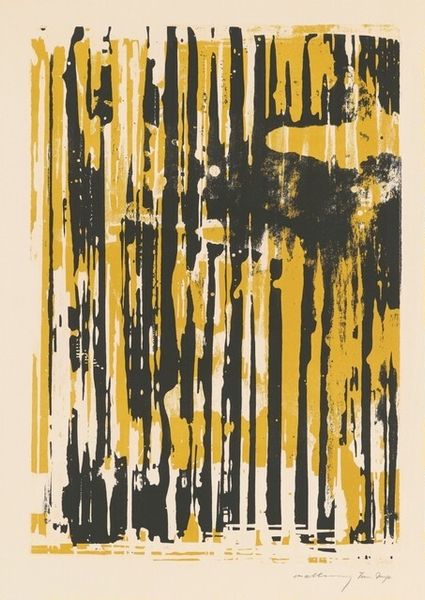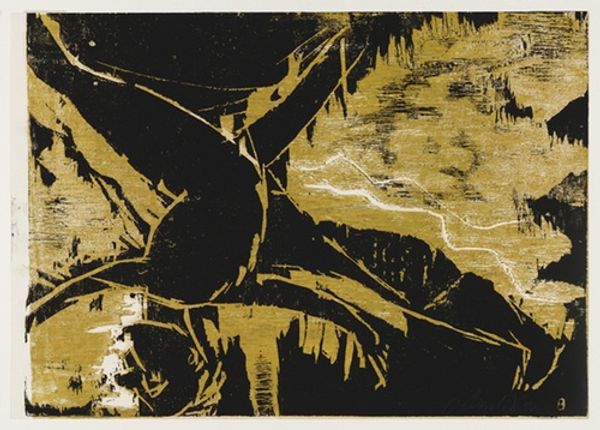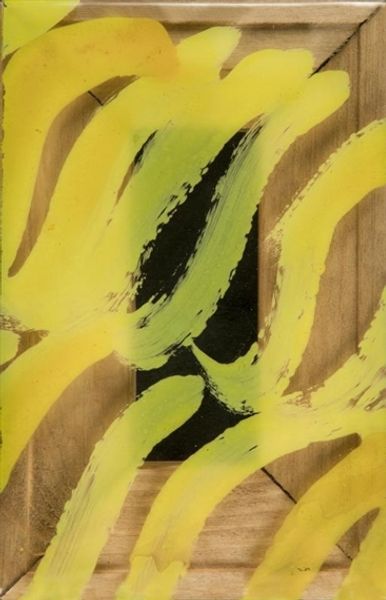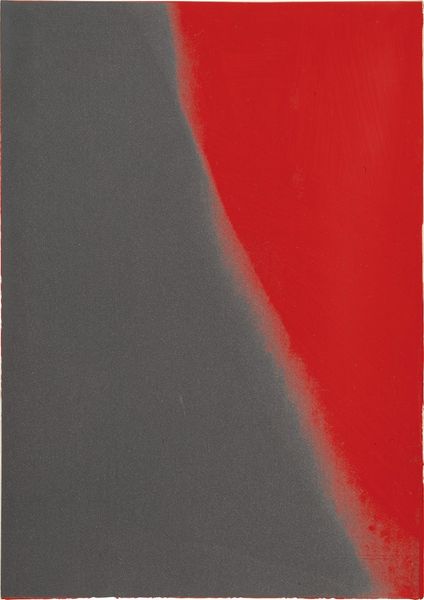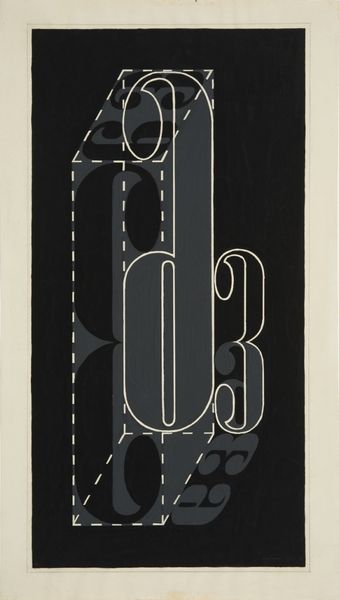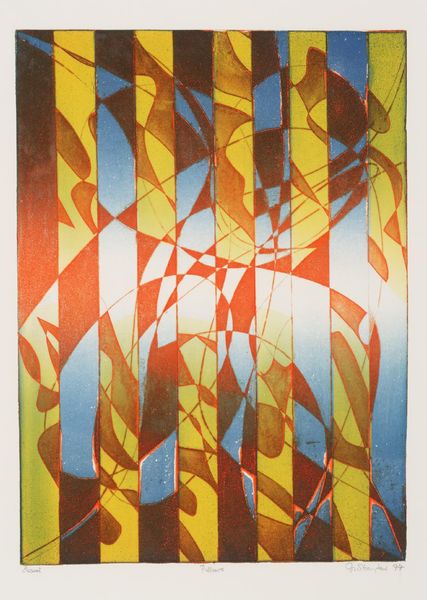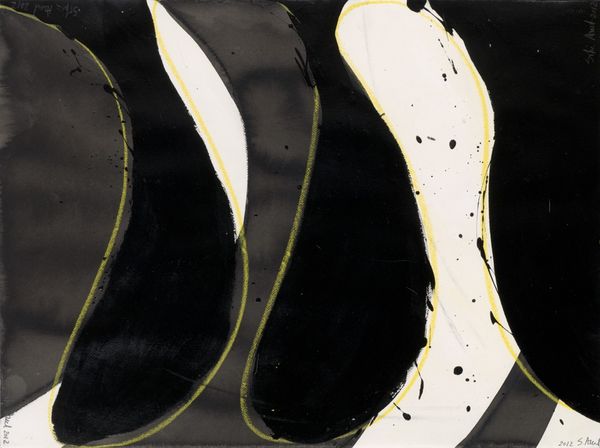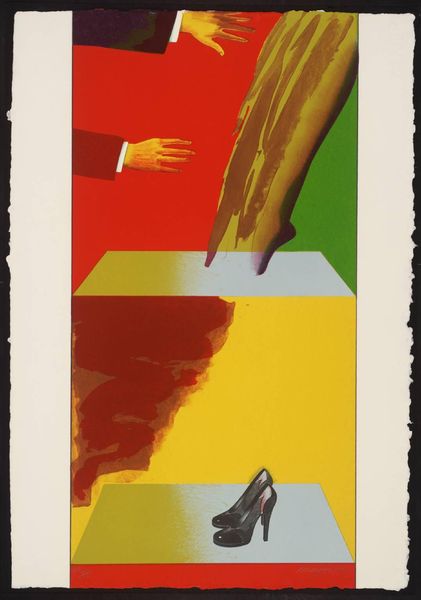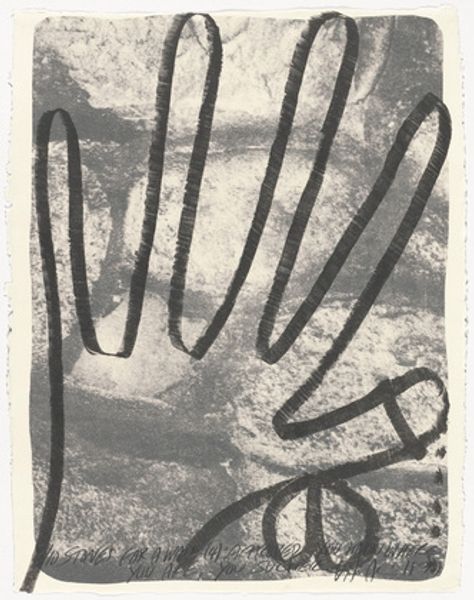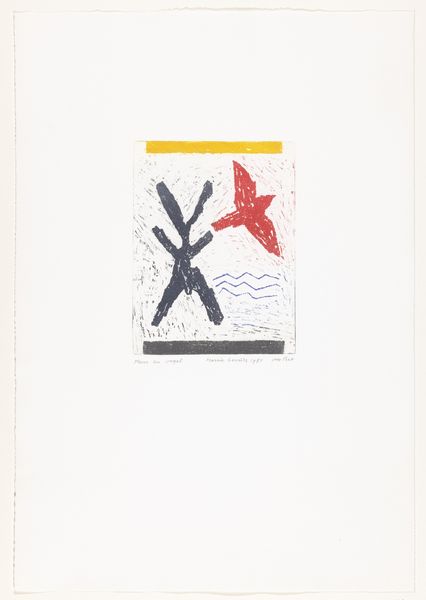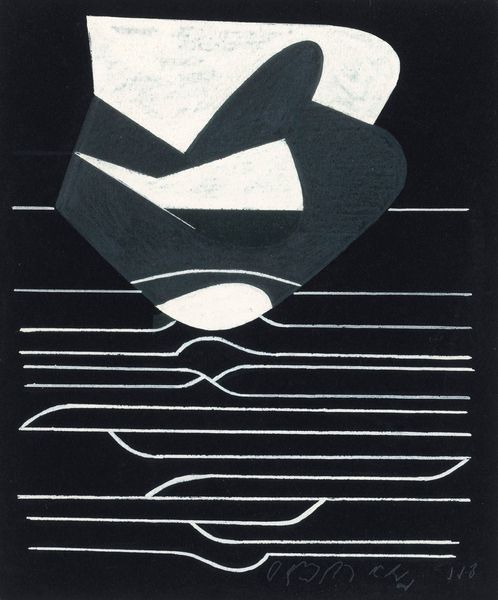
graphic-art, print, linocut
#
graphic-art
# print
#
linocut
#
linocut print
#
geometric
#
abstraction
#
line
Copyright: Public domain US
Curator: Welcome. We're standing before "Yearning Afterward," a striking linocut print crafted in 1915 by Koshiro Onchi. It’s an early piece from an artist who became a pivotal figure in the sōsaku-hanga movement, which championed self-carved, self-printed works. Editor: Wow. Immediately, I’m drawn in. It feels both ancient and futuristic, with that bold slash of yellow bisecting what looks like a shattered night sky. The texture seems almost…violent? Curator: That tension is definitely there. Consider the historical context: Onchi was working in a Japan rapidly modernizing, grappling with Western influences, and searching for new forms of artistic expression rooted in both tradition and the avant-garde. This print reflects that struggle. Editor: I see it. There’s something raw about the linocut. You can feel the artist wrestling with the material, making deliberate choices. That bright yellow band feels like a desperate attempt to hold everything together, like a bandage or a ray of hope slicing through darkness. Curator: The title "Yearning Afterward" adds another layer, suggesting a longing for what's been lost or perhaps what might have been. Post-Russo Japanese war sentiments ran high and affected society in many sectors. Onchi’s exploration of geometric form pushes abstraction, questioning fixed social ideas through pure forms and intuitive self-expression. Editor: It almost feels as if the artist is searching through the ruins, finding fragments of beauty in the broken pieces. The wispy lines in the background—they suggest cracks, yes, but also veins of gold, like kintsugi. Curator: Precisely! The use of line here, characteristic of the linocut process, also alludes to the calligraphic line of East Asian art. The geometric approach is bold in its use and arrangement—and also subversive. Editor: It’s deceptively simple, isn’t it? Only a few blocks of colour. Still, the feelings stirred are complex—mourning, resilience, hope, all swirled together like inks on a printing block. It’s incredible how a hundred years on, the artist’s questions about modernity resonate so much. Curator: Agreed. Onchi gives a way forward by reflecting critically through pure emotional and artistic expression. Editor: Thank you. It gives me a great deal to reflect on myself.
Comments
No comments
Be the first to comment and join the conversation on the ultimate creative platform.
